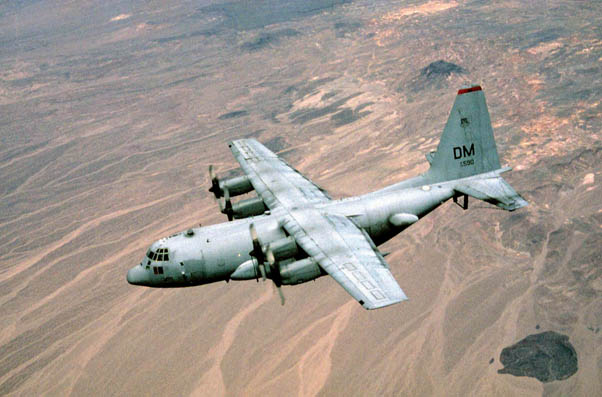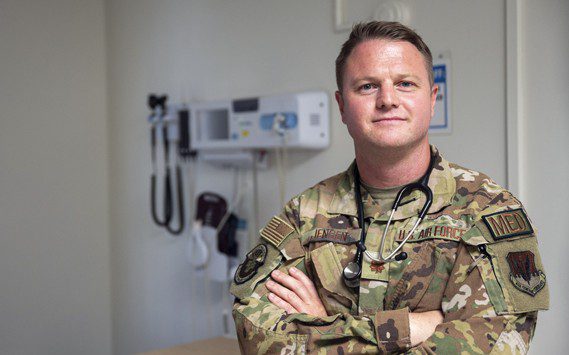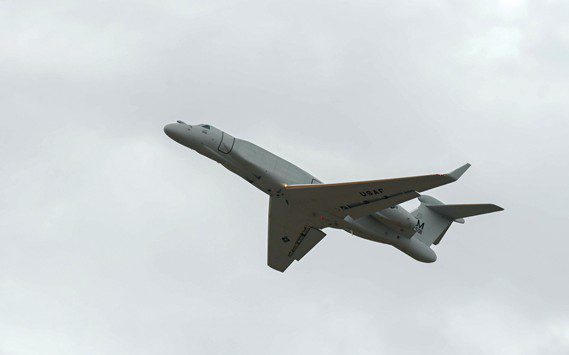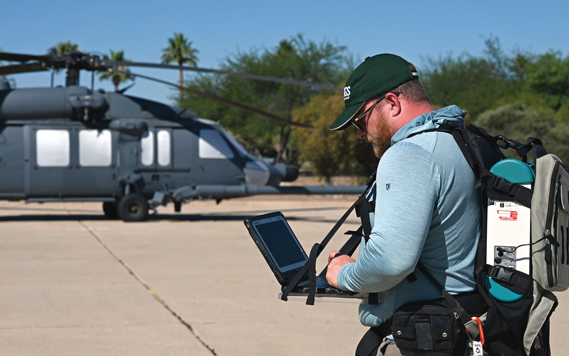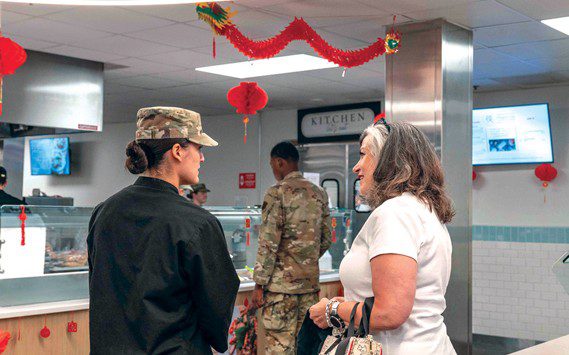DAVIS-MONTHAN AIR FORCE BASE, Ariz. — After nearly five years in the works, the 55th Electronic Combat Group’s EC-130 Compass Call flight deck simulator went fully operational in June.
The new $35 million weapons system trainer allows 55th ECG aircrew and maintenance members to perform multiple types of annual training without ever prepping an aircraft for a mission or leaving the installation.
“This has been a long time coming for the ECG and is a huge benefit to not only the 55th Wing, but also the Air Force and combatant commands,” said U.S. Air Force Col. Marty Reynolds, 55th Wing commander. “Given the high operations tempo of the ECG, this trainer will ensure our crews are ready to bring the full effect of electronic combat to any combatant commander around the world, but also reduce our reliance on aircraft for training.”
Plans for the new WST have been in the works since 2010 with acquisition and construction starting in 2012. The system was delivered in late 2014, online by March and fully operational in June of this year.
“Flight testing and discrepancy reporting process occurred in February and the first group of seven instructor operating station operators received training the first week of March,” said Garret Goff, 42d Electronic Combat Squadron EC-130H simulator site manager.
Previously, maintainers had to ensure one of the unit’s 14 EC-130s was available for training or members of the unit had to go to Joint Base Lewis-McChord, Washington, to fly in their simulator, which was not cost efficient.
“We’re putting less wear and tear on our fleet and we no longer have to send two crews a month to McChord, which adds up throughout the year,” said U.S. Air Force Lt. Col. Dean Balstad, 42d ECS assistant director of operations. “In addition, there were multiple challenges such as a dissimilar cockpit, flight profiles were not Compass Call missions and the IOS instructors were not familiar with our airframe at all.”
The ability to create the new simulator from the ground up enabled the 55th ECG to customize it to fit their needs exactly.
“It is an exact replica of a Compass Call aircraft,” Balstad said. “As far as mission set, we were able to get programming built to allow us to perform our checklists and actually do aerial refueling with a tanker from our rendezvous checklist through the post-air-refueling checklist. We couldn’t do that at McChord.”
The cost of operating an EC-130 for a six hour training mission is $26,400, while the cost of running the WST is $7,800. In addition, reducing time spent in the seat of the aircraft and utilizing the WST should help maintainers keep the Compass Calls mission ready.
“The WST should increase the lifespan of the EC-130 wing-box because the aircraft is not flying continuously for the same amount of training,” said U.S. Air Force Tech. Sgt. Rachel Lemoine, 42nd ECS EC-130H simulator superintendent. “By utilizing the WST, it decreases the hours put on the airframe and engines as well.”
And while the unit is already enjoying the upfront benefits of the WST, they are certain there will be more to come in the future.
“We have some really innovative Airmen and I’m confident they’ll continue to find more and more ways this weapons system trainer can benefit our group,” said U.S. Air Force Col. Ryan Rogers, 55th ECG commander. “For instance, the 755th Aircraft Maintenance Squadron was able to certify a maintenance member on engine run procedures and associated emergences in the WST, with the help of (simulator) instructors.
“This trainer will undoubtedly pay off for us as we continue to support missions around the world,” he added.






